Catania
BRIEF HISTORY
Palazzo Centrale dell’Università
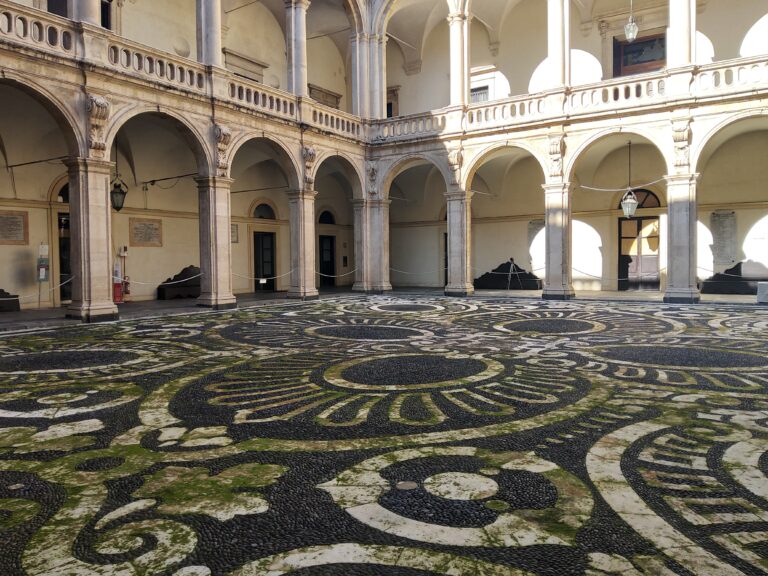
The reconstruction after the earthquake of 1693 was an opportunity for the city of Catania to express the magnificence of the role of the city’s University, the oldest and most important on the island, through the construction of a Palazzo degli Studi. The square building occupies an entire block and has a central courtyard.
Several architects participated in the construction of the building, including Francesco and Antonino Battaglia and Giovanni Battista Vaccarini.
Palazzo degli Elefanti
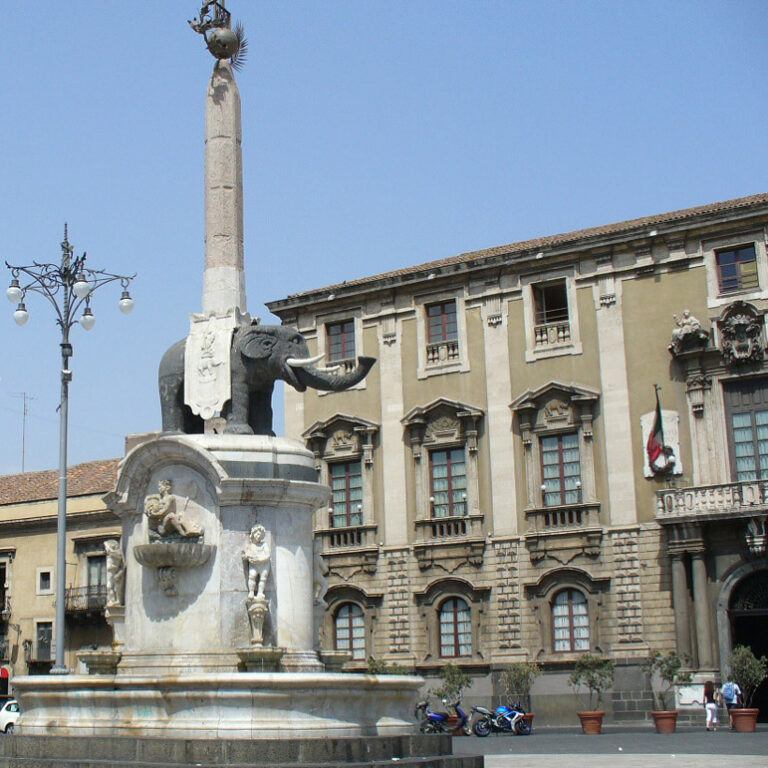
The Palazzo degli Elefanti, used as the city senate and today the Town Hall, stands on the northern side of Piazza Duomo. The building has a quadrangular plan with a central courtyard surrounded by porticoes on two sides (north and south); it is also accessible through four covered entrances, one on each side. The construction of the Senate building underwent a very long design process that can be divided into various phases, which saw the alternation of important professional figures, such as Giovanni Battista Longobardo, Giovanni Battista Vaccarini, Giuseppe Palazzotto and Stefano Ittar.
Villa Zingali Tetto
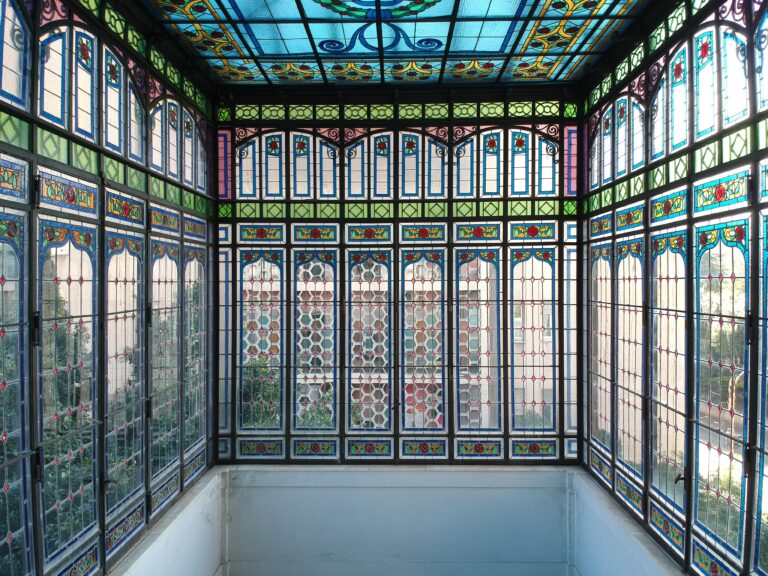
The villa is actually a large mansion with a sizeable historic garden. It stands at the end of Via Etnea, the preferential axis of the city’s expansion to the north.
The design of the villa was commissioned in 1926 by the lawyer Paolo Zingali Tetto to the engineer and architect Paolo Lanzerotti.
The building was later bequeathed to the University of Catania, and today houses the MU.RA,the Museum of Representation.
Two illustrious artists contributed to the decoration of the main floor: Salvatore Gregorietti, for the stained-glass windows in the winter garden, and Gaetano D’Emanuele, for the frescoes in the reception rooms.
SEISMIC RISK
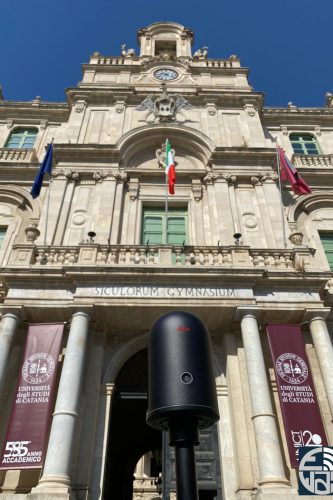
Prevention and timely action in the event of natural disasters to safeguard the cultural heritage requires a detailed study aimed at defining seismic risk scenarios for the area in which the studied site is located. Reference will also be made to a risk analysis based on the deterministic study of seismic action in relation to the earthquakes of 11 January 1693 and 20 February 1818, as well as the recorded earthquakes of:
– 13 December 1990
– 29 October 2002
– 26 December 2018
Once the expected earthquake has been defined, the plan is to carry out numerical simulations of the behaviour of buildings subjected to seismic action, capable of providing the damage scenarios that may occur during the expected earthquake and render the vulnerability indices. Original simulation models will be used, proposed in the framework of the research by DICAR, calibrated on the data obtained from survey activities, dynamic monitoring and in situ tests needed to characterise the mechanical properties of the materials. The dynamic monitoring will be carried out by the INGV research group and will be based on the response of the buildings to environmental vibrations.
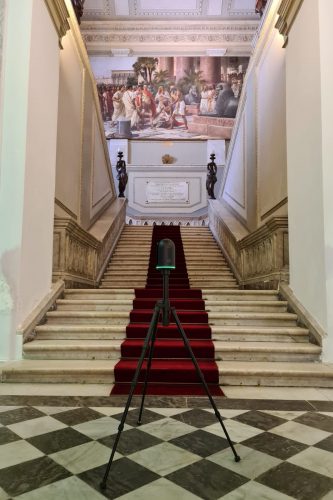
Once the expected earthquake has been defined, the planis to carry out numerical simulations of the behaviour of buildings subjected to seismic action, capable of providing the damage scenarios that may occur during the expected earthquake and render the vulnerability indices. Original simulation models will be used, proposed in the framework of the research by DICAR, calibrated on the data obtained from survey activities, dynamic monitoring and in situ tests needed to characterise the mechanical properties of the materials. The dynamic monitoring will be carried out by the INGV research group and will be based on the response of the buildings to environmental vibrations.
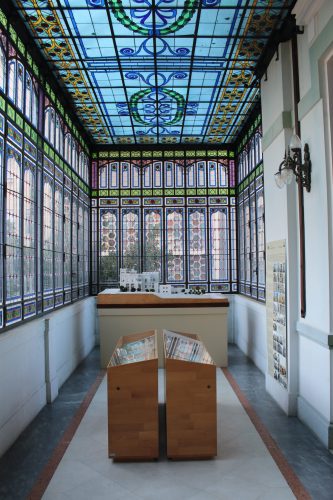
For the villa, numerical simulations of the non-linear behaviour of the building in seismic conditions will be carried out, oriented to calibrating an advanced calculation model based on data from direct surveys and in situ investigations, but also on the basis of dynamic tests.
RESEARCH OBJECTIVES COMMON TO THE THREE BUILDINGS
Laboratory of Architectural Photogrammetry and Surveying (UNICT):
archiving, optimising and clearly communicating the multiplicity of collected data and carefully selected information deriving from the historical-archival investigation and digital survey activities (Laser Scanner and multi-image photogrammetry).
Research Unit of Geotechnics of DICAR (UNICT):
– Retrieval and analysis of the data related to the drillings, as well as of the geotechnical and geological characteristics of the boreholes performed and available in the study area.
– geotechnical characterisation of the site and definition of the geotechnical model of the subsoil and dynamics of the samples taken from the site, following laboratory tests;
– study of the phenomenon of local seismic amplification that expresses the capacity of the subsoil to modify the different seismic inputs passing through it, also on the basis of the analysis of the non-linear behaviour of the ground;
– study of soil-structure interaction phenomena.
Research Unit of Applied Seismology-Geophysics of INGV:
– environmental seismic noise measurements aimed at structural monitoring;
– evaluation of possible local seismic amplification phenomena of foundation soils;
– structural monitoring and control with acquisition systems and sensors realised within the eWAS project.
ALSO
Structures Research Unit of DICAR (UNICT):
Palazzo degli Elefanti
implementation and calibration of advanced calculation models, based on macro-elements, starting from the dynamic response to environmental vibrations monitored on existing buildings by means of model updating strategies. To this end, an original discrete macro-element strategy, developed at the University of Catania, is used.
These activities will enable a more reliable evaluation of the seismic performance of existing buildings, in particular of historical-monumental nature, since it is based on experimental validation in the dynamic field and on the material properties actually measured in situ by means of non-destructive and semi-destructive tests.
Villa Zingali Tetto
Implementation of a calculation model in the framework of an original strategy, with discrete macro-elements, developed at the University of Catania.
These activities will allow an accurate assessment of the seismic vulnerability of the building.

RESEARCH GROUPS
-
UNICT Team:
- Laboratory of Architectural Photogrammetry and Surveying "Luigi Andreozzi”
- Research Unit and Geotechnics Laboratory of DICAR
- Structures Research Unit of DICAR - National Institute of Geophysics and Volcanology (INGV)
